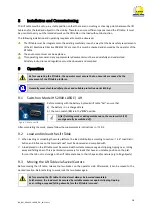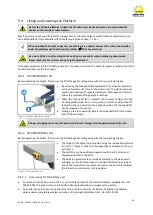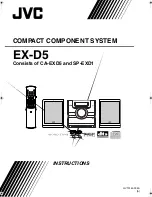
29
BA_BM_HS-2000-LARGE_EN_46-21.docx
14
Decommissioning
•
Before taking out of service, the platform of the lift table must be lowered completely.
•
For recommissioning, observe chapter
“Installation and commissioning“.
•
For the final scrapping of the lift table, please refer to chapter
15
Disassembly and Scrapping
When dismantling and scrapping the lift table, the current EU regulations or the respective regulations and laws
of the country of operation, which are prescribed for proper dismantling and disposal, must be observed. The
aim is to dismantle the lift table and its various materials and components properly, to recycle all possible parts
and to dispose of non-recyclable components in the most environmentally friendly way.
Please pay particular attention to
•
the dismantling of the lift table in the working area
•
proper dismantling of the lift table and accessories
•
a safe and proper removal of the lift table
•
proper separation of all components and materials.
When dismantling and disposing the lift table, the laws and regulations in force at the place of use concerning
health and environmental protection must be observed.
Remove all residues of oil, grease and other lubricants and have them disposed of properly
by a qualified disposal company.
When separating, disposing of or recycling the lift table materials, comply with the environmental protection
laws in force at the place of use regarding the disposal of industrial solid waste toxic and hazardous waste.
•
Hoses and plastic parts as well as other components that are not made of metal must be
dismantled and recycled or disposed of separately.
•
Electrical components such as cables, switches, connectors, transformers, etc. must be re-
moved and (if possible) recycled or otherwise disposed of in a qualified manner.
•
Pneumatic and hydraulic parts such as valves, solenoid valves, pressure regulators, etc.
must be removed and (if possible) recycled or otherwise disposed of in a qualified manner.
•
Dismantle the base frame and all metal parts of the lift table and sort them according to
material type. Metals can be melted down and recycled.
In the event of improper disposal of lubricants, the following residual risks to the environment and health exist:
Pollution of the environment by seepage into groundwater or sewage system.
Poisoning of the personnel contracted for the disposal.
Note:
The disposal of lubricants considered toxic and hazardous must be carried out in accordance with the
regulations and laws in force at the respective place of use. Only qualified disposal companies that have the
appropriate permits for the disposal of used oil and lubricants are to be commissioned with the disposal.






































